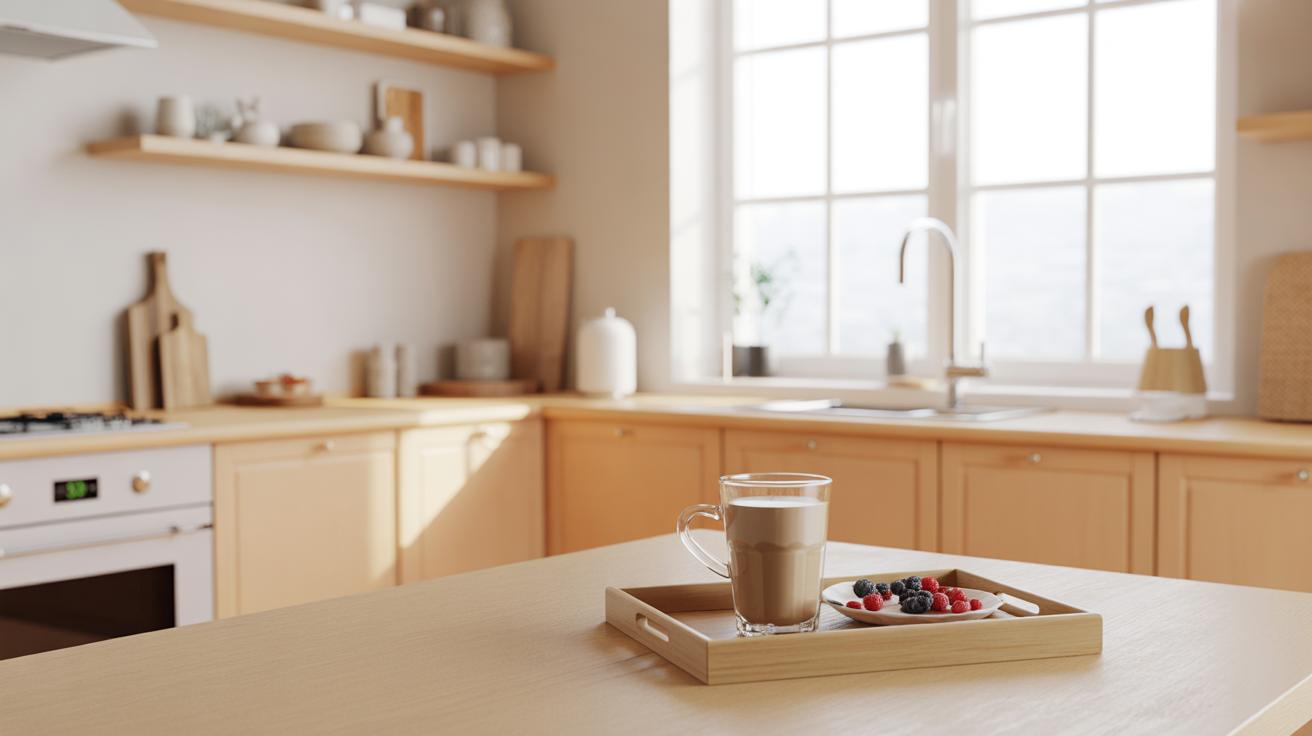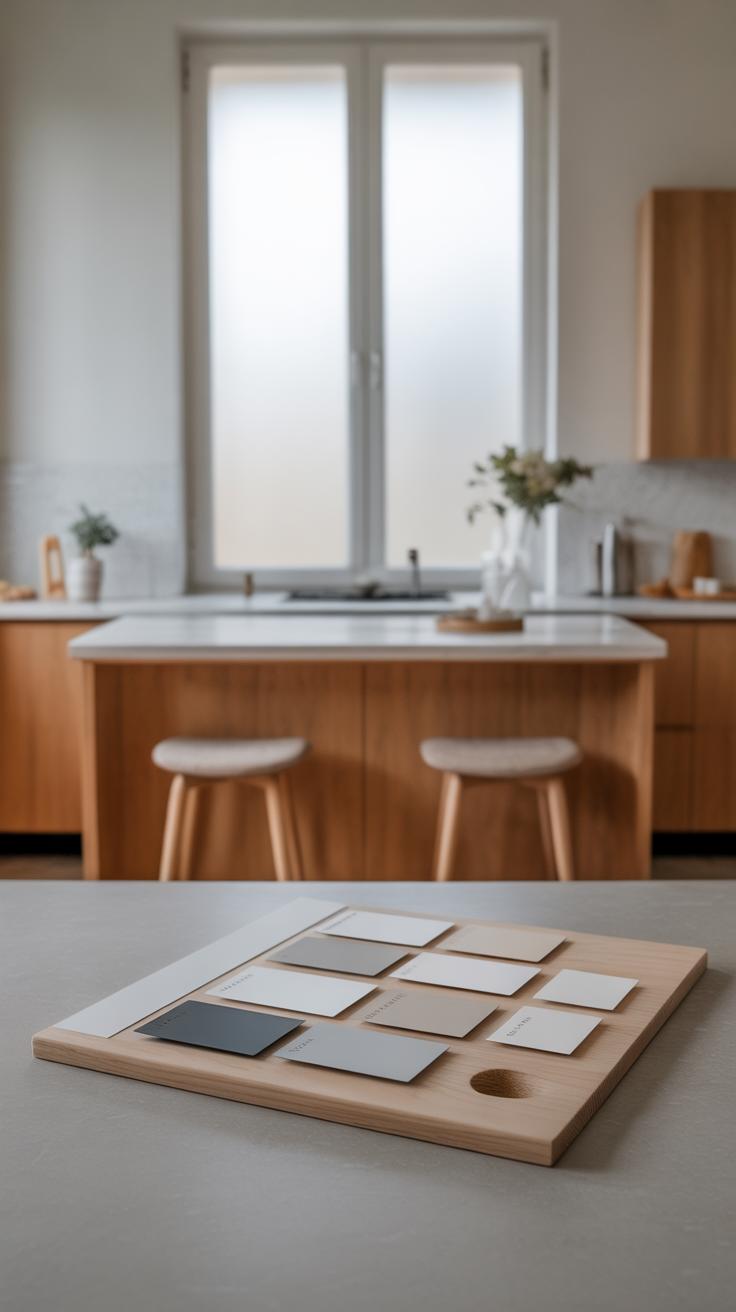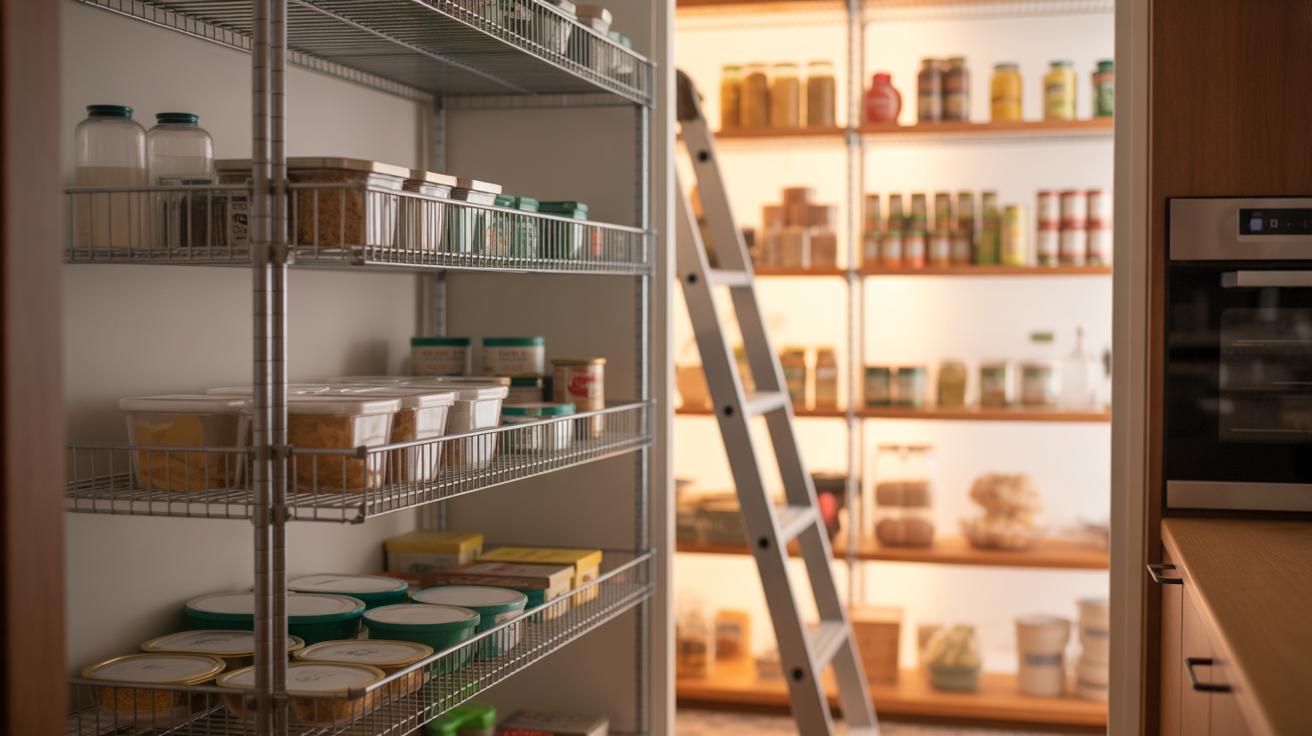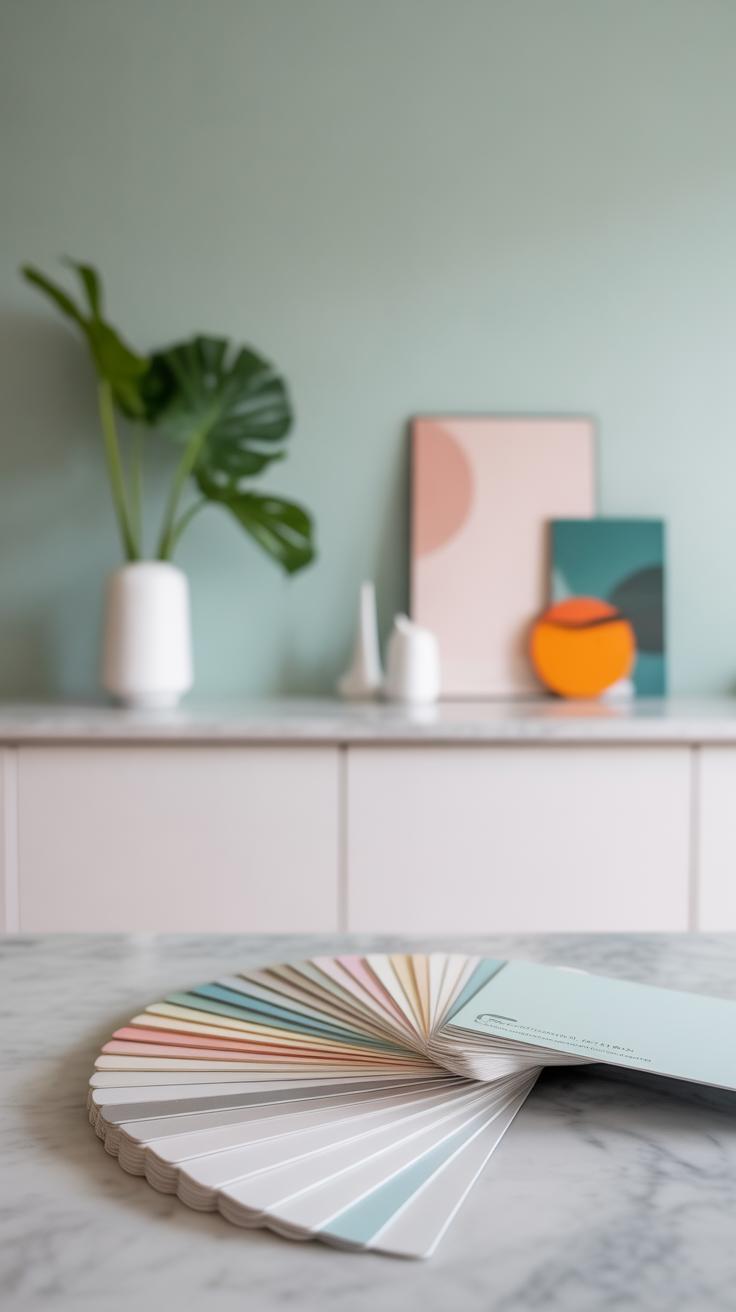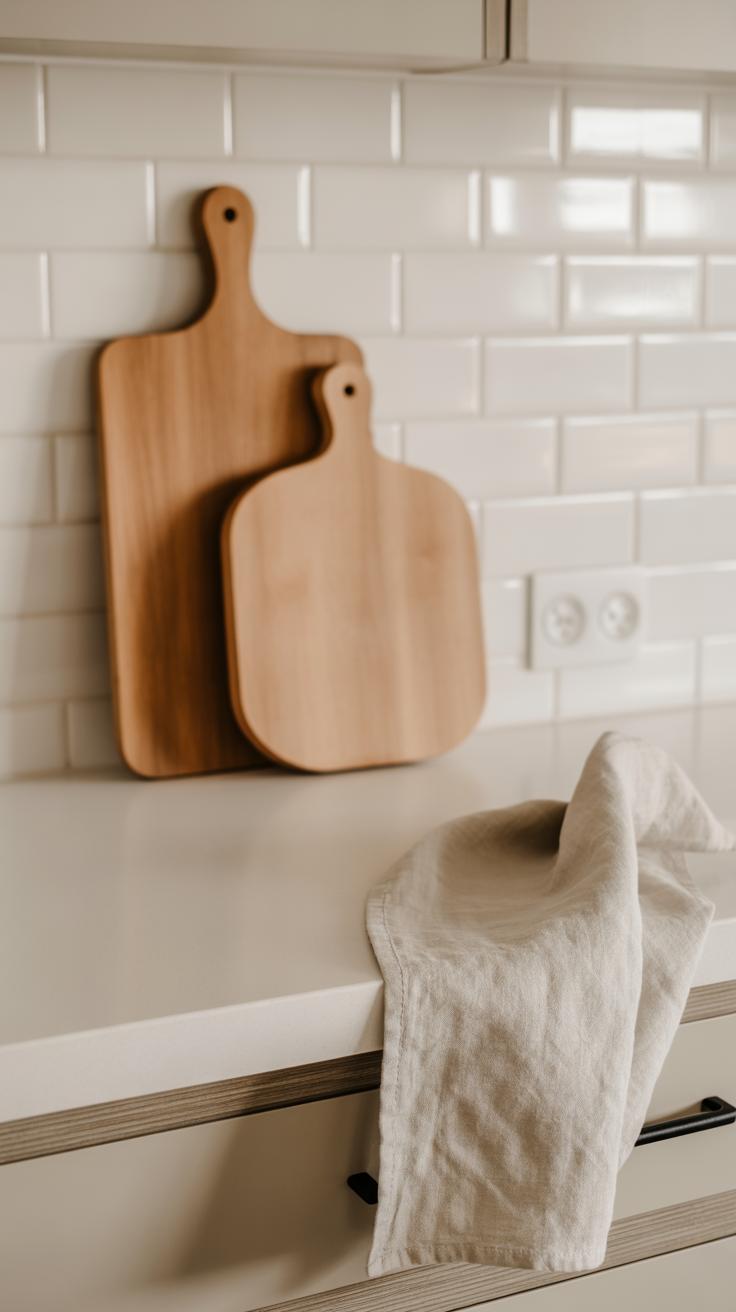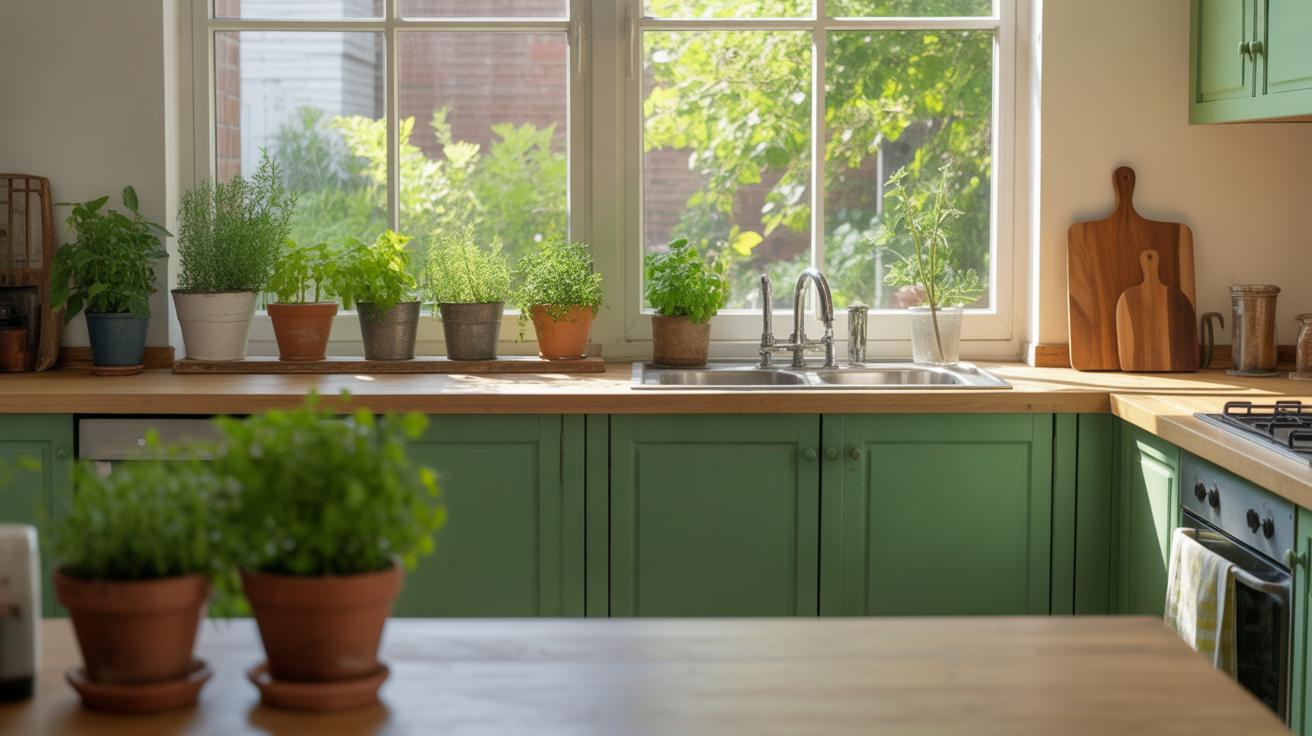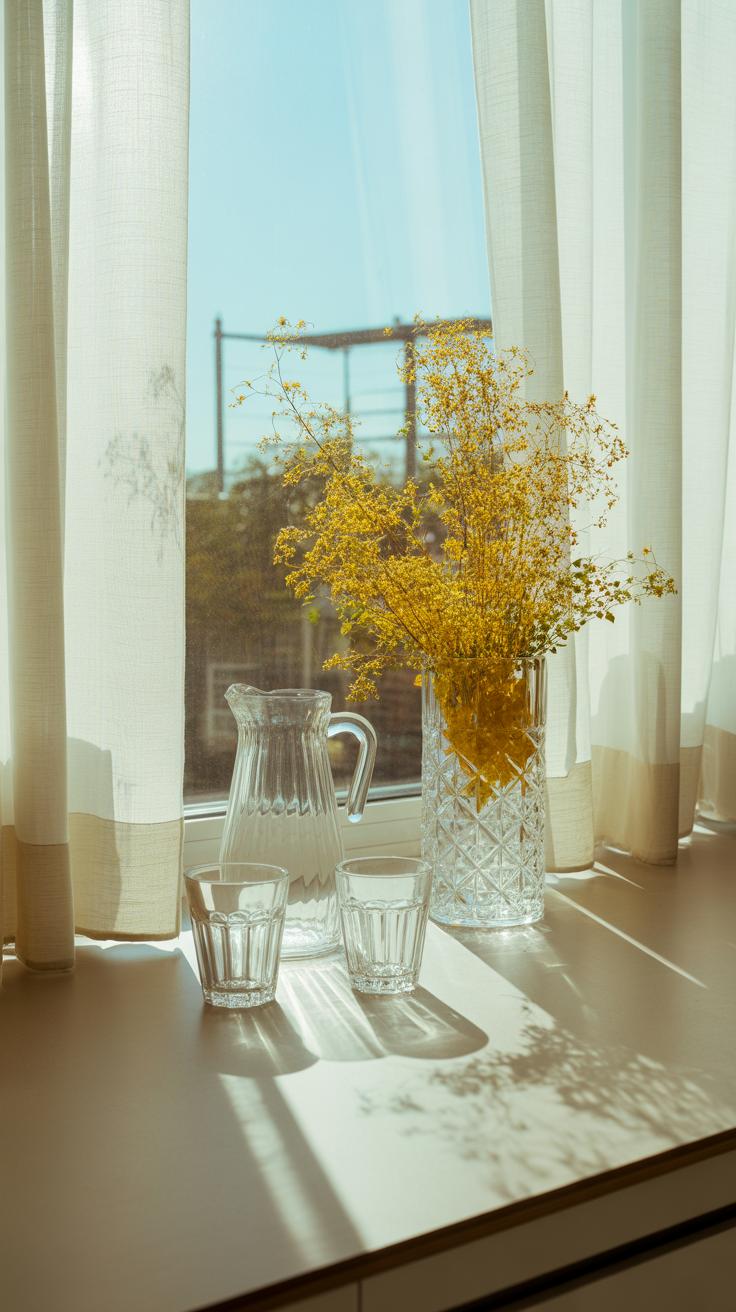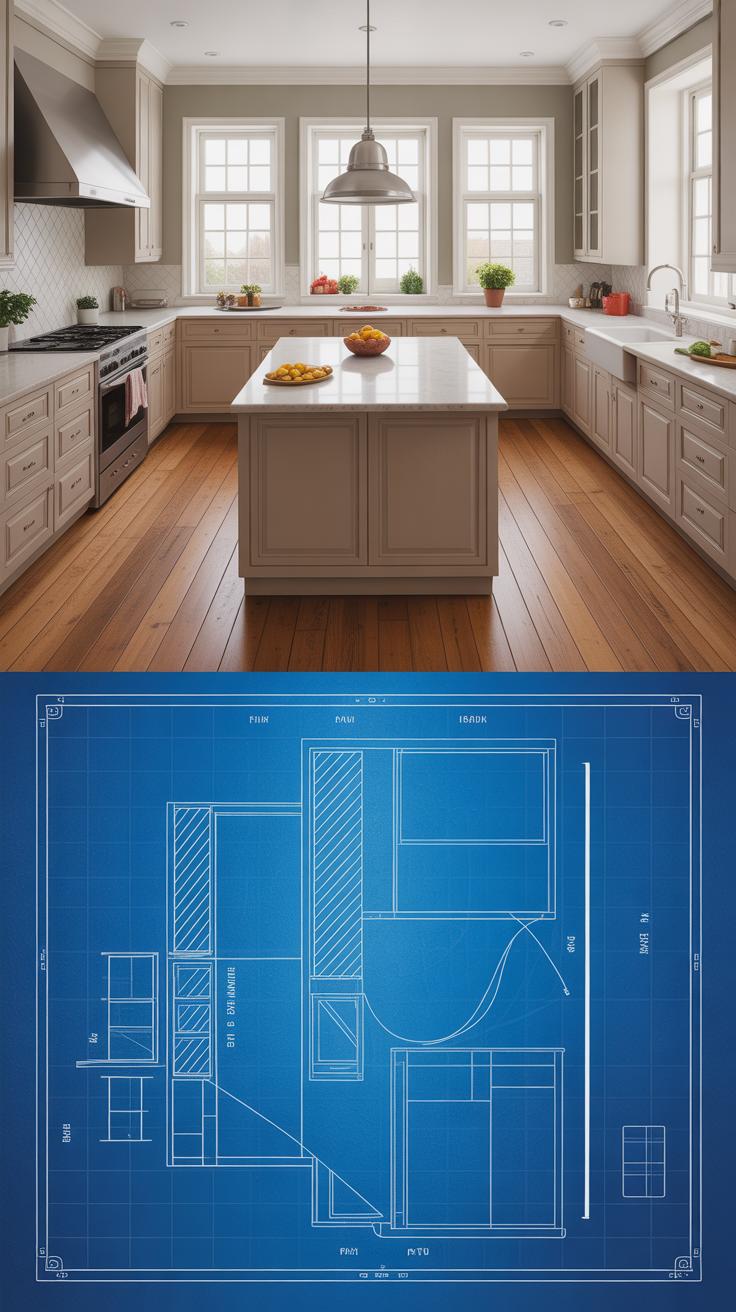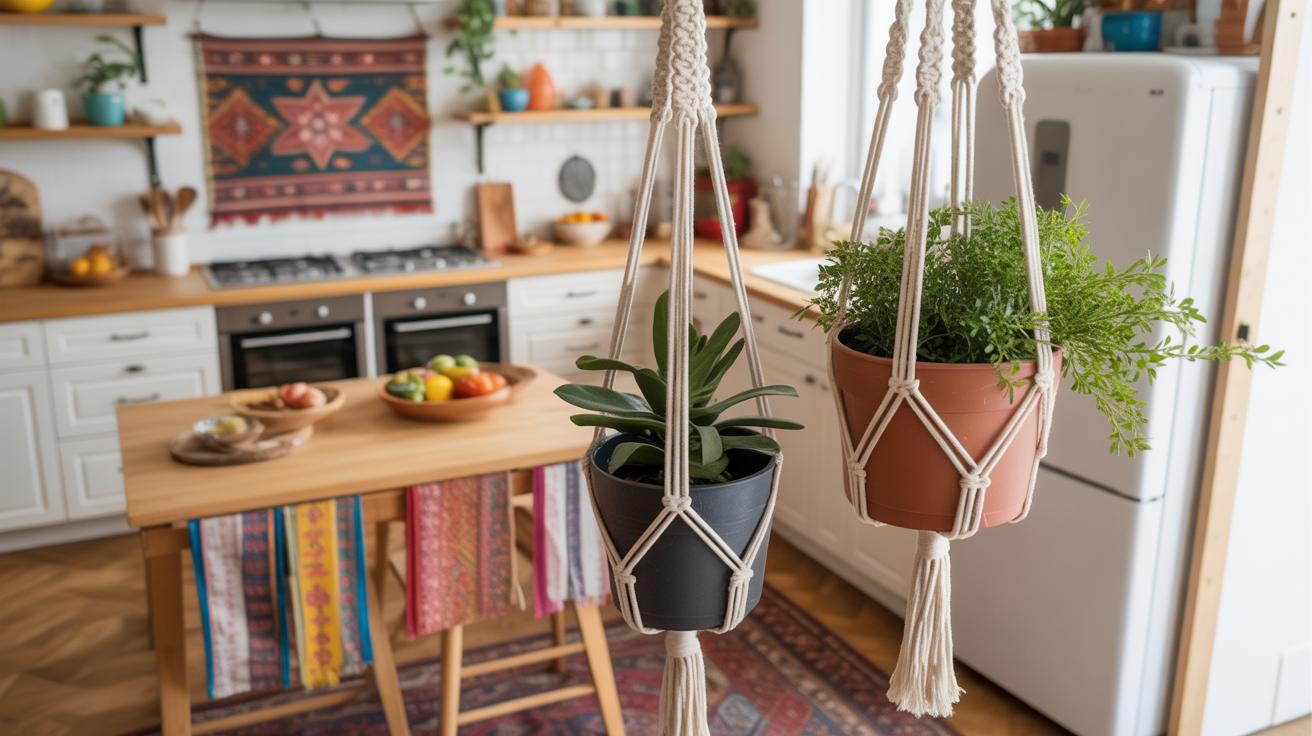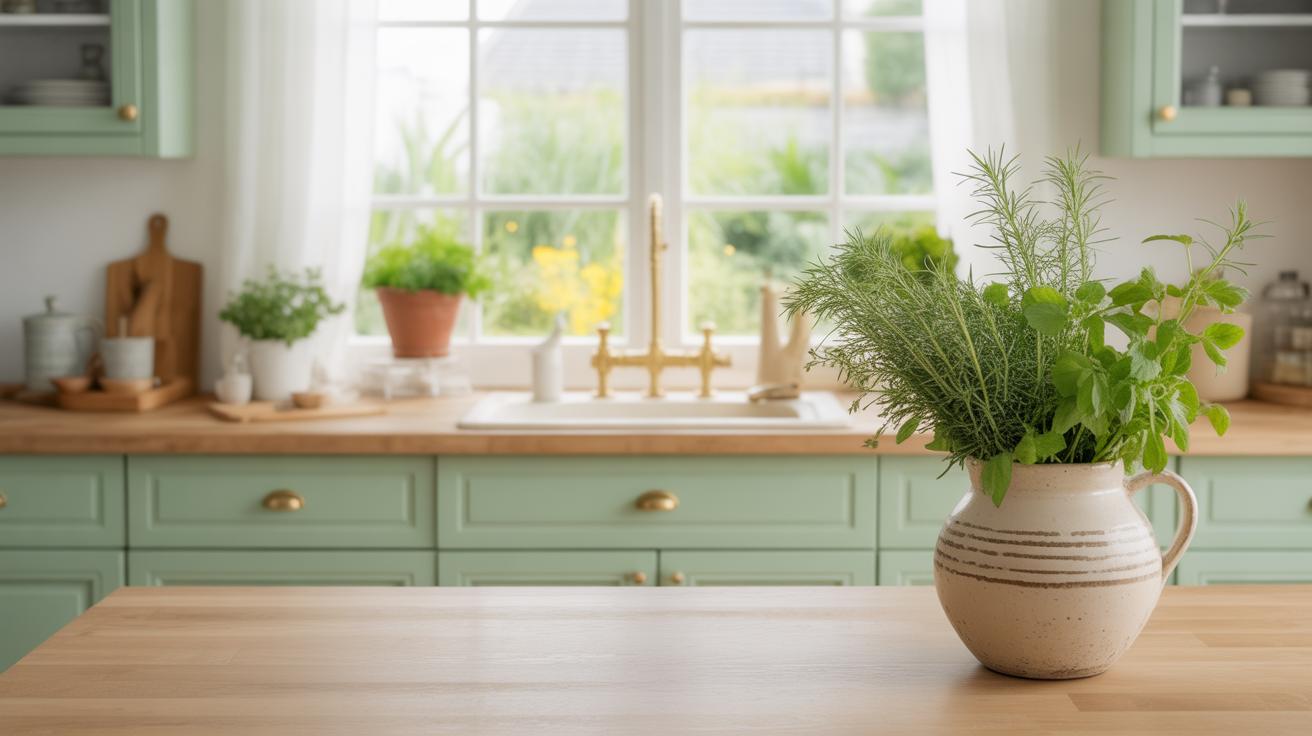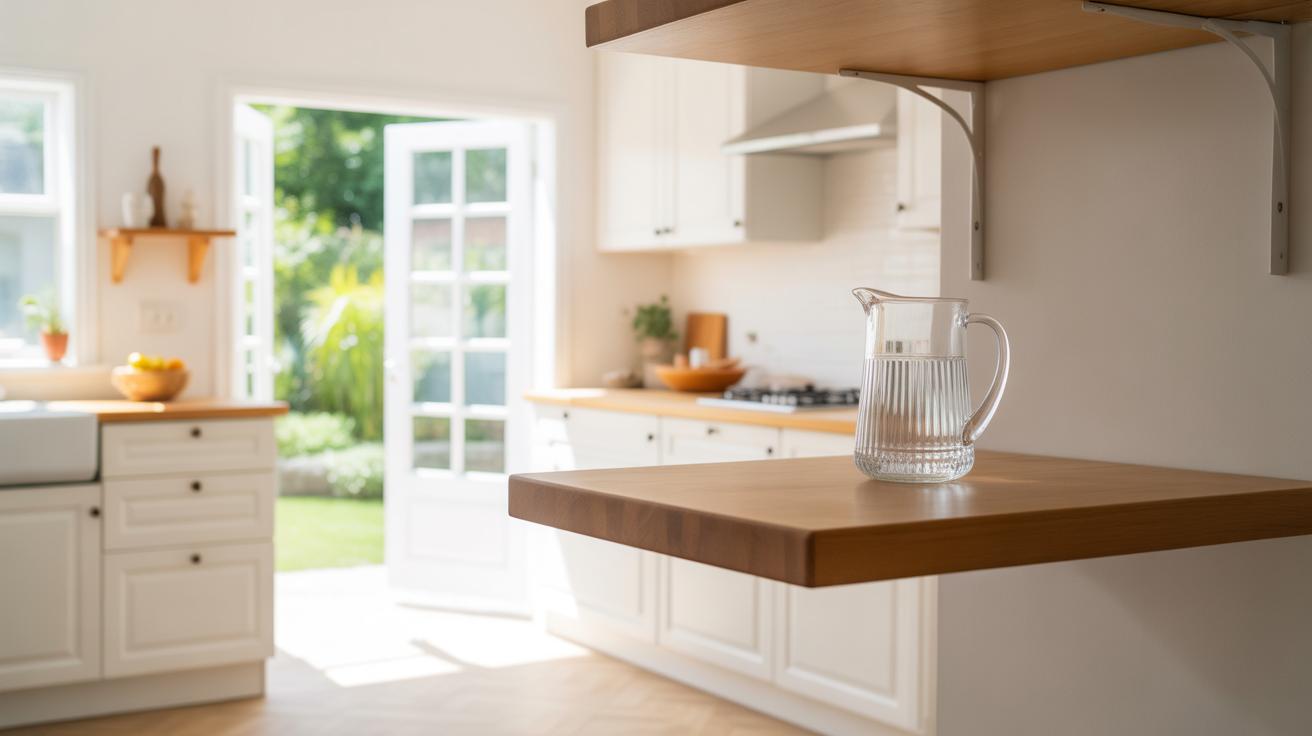Introduction
Scandinavian kitchen design focuses on simplicity, functionality, and natural light. It reflects the broader Scandinavian design movement that values clean lines, minimalism, and practical use of space. This article will guide you through ideas that help you create a kitchen environment that feels light, airy, and welcoming.
By exploring the characteristics of Scandinavian style, you will learn how to use colors, materials, and layout to bring brightness and openness into your kitchen. Keep reading to find practical tips and inspiration for designing your own Scandinavian kitchen space.
Understanding Scandinavian Kitchen Design Principles
Scandinavian kitchen design rests on a few simple yet powerful ideas. For one, simplicity isn’t just a style choice; it’s a response to the Nordic way of life. Long winters and limited daylight mean spaces need to feel open and fresh, which is why clutter has no place here. You’ll notice clean lines everywhere—flat surfaces, subtle joins, and an almost effortless sense of order.
Minimalism drives these kitchens, but it’s not about stark emptiness. Instead, it’s about keeping only what’s necessary and useful. You might even say it encourages a sort of quiet calm, but sometimes that calm can feel a bit too rigid if the space lacks warmth. Still, subtle textures help balance that.
Functionality takes center stage. In smaller Nordic homes, every inch counts. So, organizing smartly and designing for ease of use is vital. Drawers that open smoothly, thoughtful storage behind simple façades, and layouts designed to reduce steps—these choices make cooking less of a chore. You probably agree that a kitchen should work with you, not against you.
- Simple forms: flat doors, straight edges, and hidden handles.
- Uncluttered surfaces that invite you to breathe rather than busy you.
- Practical storage prioritizing accessibility, like pull-out cabinets and clever dividers.
Scandinavian kitchens echo the lifestyle of the region—you prepare simple meals, share meaningful moments, and keep spaces easy to maintain. It’s almost as if the design gently pushes you to slow down and appreciate those daily routines. So, when you think about creating your own light and airy kitchen, maybe consider what really adds value and what just fills space.
Choosing The Right Colors For A Light Kitchen
Light Colors To Brighten Your Space
Light colors are the go-to choice when aiming for a bright and airy Scandinavian kitchen. Whites and pale grays stand out because they reflect whatever natural light the room gets, bouncing it around and making the space feel bigger than it is. If your kitchen tends to be on the smaller side or doesn’t receive much daylight, these shades can almost work like a little daylight boost. I’ve noticed even a slightly off-white can make a difference, keeping the kitchen from feeling sterile while still brightening it up.
Soft blues and natural tones come into play here too. They’re subtle enough to not drag the space down but offer a little more warmth or coolness depending on what you want. These colors seem to balance maintaining the Scandinavian clean look, but at the same time help the space feel more inviting. Light, neutral colors just… they work with the light, not against it.
Combining Colors For Visual Interest
While sticking mostly to light colors, there’s room to experiment with subtle contrasts to avoid a bland vibe. Think of adding a pale blue island or a muted sage backsplash. These touches don’t overpower the room but introduce some dimension. You might try pairing pale gray cabinetry with warmer wooden accents—this kind of mix adds depth, even if it’s only barely noticeable at first.
Accents in darker shades don’t have to be large or bold. A slim black handle or a charcoal countertop edge can give your eye a place to rest. This keeps the kitchen feeling airy but not too one-note. It can be tempting to avoid darker shades altogether to keep an “all light” look, yet a touch here and there often makes the light colors stand out more, strangely enough. It’s a bit like the room needs those small anchors.
Materials And Textures To Use In Scandinavian Kitchens
Natural materials play a key role in Scandinavian kitchens, bringing warmth without clutter. Light wood is the star here—think birch or pine—for flooring, cabinets, or even seating. That subtle grain and soft tone create a natural glow that feels inviting yet clean. You might notice how these woods don’t demand attention but quietly enhance the space. Sometimes, just swapping out a dark countertop for a wooden one changes the mood entirely.
Textures are equally important, but in a restrained way. Simple linens for curtains or towels, unglazed ceramics for bowls or mugs—they add depth but keep things calm. Those small tactile contrasts, like a rough ceramic jug beside slick countertops, make the kitchen feel lived-in without upsetting the minimalist balance. You may find these touches bring a different kind of comfort than color does.
So, when you think about materials in your kitchen, focus on these:
- Light wood surfaces for warmth and natural appeal
- Raw stone or concrete elements that feel grounded without fuss
- Soft textiles like linen or cotton that soften the harder edges
- Ceramics with subtle textures for everyday use
Isn’t it interesting how using fewer materials—done right—can make the space feel more welcoming? Maybe simplicity in texture is what brings character without overwhelming the eye.
Maximizing Natural Light In Your Kitchen
When you think about Scandinavian kitchens, natural light plays a huge role in shaping the whole atmosphere. Getting more of that light inside isn’t just about having big windows—it’s also about placing them thoughtfully. Windows facing south or east tend to bring in the most light during the day. If your kitchen is a bit tucked away, maybe you can add a skylight to pull in daylight from above. Skylights can feel a little unusual in kitchens, but honestly, they make a massive difference.
Window treatments also matter. Instead of heavy curtains, think about sheer or light-filtering blinds that don’t block sunlight but soften it. You’ll want something easy to pull out of the way too, because once you start cooking, natural light is the last thing you want to lose.
Reflective surfaces are your friends here. Glossy countertops, like quartz or lacquered wood, bounce light around the room. Same goes for backsplashes with a smooth, shiny finish—glass tiles or polished ceramics. I’ve seen a kitchen where a white high-gloss backsplash actually brightened the whole space, even on gloomy days. But beware of overdoing it, as too much shine can feel sterile or cold.
Sometimes, combining window placement, simple window shades, and reflective surfaces can turn a cramped kitchen into one that feels quite airy. Maybe less about flooding every inch with light, and more about encouraging its movement throughout your space.
Smart Kitchen Layouts For Open And Airy Spaces
Scandinavian kitchens often favor simplicity in layout, which helps keep the space feeling open and light. Linear kitchens—where cabinets and appliances run along one wall—are a favorite for smaller spaces. They keep things streamlined and create an unobstructed path through the kitchen. You might think such a straightforward design could feel bare, but with the right choices, it avoids looking cramped or too sparse.
L-shaped kitchens, on the other hand, introduce a bit more flexibility and create natural corners for cooking and prep. This layout encourages an easy flow between zones without crowding the room. I’ve noticed how this shape subtly invites movement—you’re not stuck in a single aisle but can shift positions freely, which feels less confined.
Open Plan Kitchens
Connecting the kitchen with dining or living areas is a very Scandinavian idea. It encourages socializing and keeps the kitchen space feeling larger since there aren’t many walls breaking things up. You’re cooking but still part of the conversation or activity nearby. Although open layouts can invite noise and mess to spread out, the bright, airy feel often makes these trade-offs worth it.
Efficient Use Of Space
Keeping a kitchen uncluttered is easier when you limit unnecessary items on counters. Scandinavian design likes clean lines and smart storage tucked away. Instead of overcrowding shelves, think about built-in cabinetry or shallow drawers that make daily essentials accessible but out of sight. Even the choice of a smaller sink or a slim fridge can open up more breathing room, making the kitchen feel less crowded—even if the size isn’t large.
Have you ever found a kitchen where the layout just lets you move naturally without hesitation? That’s the kind of flow these designs want to encourage. It’s not about stuffing every inch but letting the room breathe while staying practical.
Furniture And Storage Solutions That Keep Things Simple
In a Scandinavian kitchen, furniture and storage play a huge role in shaping the feel of the space. The goal is clear: keep things simple, clean, and avoid any unnecessary fuss. Furniture tends to stay minimalist, with sharp lines and basic shapes that don’t draw too much attention. Think natural wood or matte finishes—nothing shiny or overly decorative. You might notice how some homeowners use open-legged stools or slim tables that don’t crowd the room or interrupt the flow.
When it comes to cabinets and shelves, simplicity rules. Avoid ornate handles or heavy molding. Instead, favor flat-front doors or recessed grips that blend in rather than stand out. It sounds almost boring at first, but this restraint helps keep your kitchen feeling calm, almost like a blank canvas. Plus, these choices age well—they resist looking dated quickly, which is practical in the long run.
Clutter is a silent enemy here. Hidden and practical storage solutions are your friends. Drawers with dividers, pull-out pantry shelves, or even push-to-open cabinets help hide away what you don’t want in sight but still keep everything accessible. By keeping countertops mostly clear, the room feels much airier, even when you’re in there cooking or prepping. Have you tried using a mix of drawers and upper cabinets to keep things balanced? It might take some trial and error, but it’s worth the effort.
Adding Personal Touches Without Overcrowding
Giving your Scandinavian kitchen a personal touch doesn’t mean filling every inch with stuff. It’s more about subtle choices that reveal your style without piling on clutter. Think carefully about each item’s role—not just how it looks but how it feels in the space.
Plants are a great way to breathe life into your kitchen. Even a small potted herb on the windowsill can change the mood. The green adds freshness and a bit of softness against the clean, light surfaces Scandinavian kitchens favor. It’s almost like bringing a snippet of the outside indoors.
When it comes to decorations, less really is more. A single framed print or a few ceramic bowls displayed neatly can add character without overwhelming the space. You might want to pick items with clean lines and natural materials; these echo the simplicity at the heart of Scandinavian design. At the same time, a playful or colorful piece here and there can prevent the kitchen from feeling too sterile.
Ask yourself: does this item serve a purpose beyond looking nice? If not, does it at least inspire or comfort you? If yes, then it probably deserves a spot in your kitchen. If no, consider leaving it out. Personalizing your space should be a gradual process, not a rush to fill every surface.
Bringing Scandinavian Kitchen Ideas To Life
Planning Your Scandinavian Kitchen
Start by measuring your kitchen carefully. Knowing exact dimensions helps avoid surprises later. Don’t rush this step—double-check walls, doorways, and window placements. It shapes what you can do with layout and storage.
Next, decide which Scandinavian style fits your taste. Are you drawn to sleek minimalism or something warmer with rustic touches? Browsing images, magazines, or online platforms can spark ideas. Creating a mood board, even a simple one on your phone, brings your vision into focus.
Think about colors and materials that feel light and open. White or pale wood tones often lead, but subtle greys or soft blues work well too. Lighting matters—natural daylight first, supplemented by clean, unobtrusive fixtures. The goal is an airy vibe, not just bright lights.
Implementing Changes Step By Step
Don’t feel pressured to redo everything at once. Start with small shifts like swapping cabinet hardware or updating light fixtures. These quick wins give a glimpse of your future kitchen without stretching your budget.
Sourcing materials can be a bit tricky. Scandinavian design favors natural elements: oak, birch, linen. Sometimes local suppliers offer affordable, quality options that look authentic without being costly. Mix old and new thoughtfully. Use vintage bowls or a reclaimed wood table alongside fresh cabinetry. It creates character without clutter.
Finalize by testing layouts and completing one section before moving on. It helps prevent overwhelm and lets you adjust as you go. Think of the process as layered—each change adds to the overall feel without rushing the result. You might find your ideal kitchen emerges slowly, quietly, and in a very satisfying way.
Conclusions
Your kitchen can benefit greatly from Scandinavian design ideas that emphasize light and space. By choosing the right materials, colors, and furniture, you can transform an ordinary kitchen into an inviting and functional room. These concepts help in creating a kitchen where you can cook, eat, and enjoy family time comfortably.
Remember, simplicity and practicality are key. Applying these ideas will not only make your kitchen look beautiful but also improve its usability. Take these suggestions step by step, and your kitchen will soon feel more open, bright, and airy, all inspired by Scandinavian tradition.

